I grew up thinking I’d never visit Cuba. It’s illegal, right? Now, with political relations easing and my boyish, borderline disconcerting passion for all things Latin America, I decided to give it a try – before the rest of the Americans arrive. The following chronicles two weeks in the charming, peculiar, and decidedly unique island-nation of Cuba.
First thing’s first: is it legal to visit?
I have an American passport; there are ~12 legal pretenses under which I can visit Cuba: “educational activities,” “support for the Cuban people,” and “religious activities,” to name a few. Excluded, unfortunately, is “tourism”: it is not legal for Americans to visit Cuba for purposes of pure tourism. However..
I went to Cuba as a freelance journalist. Am I a freelance journalist? You tell me.
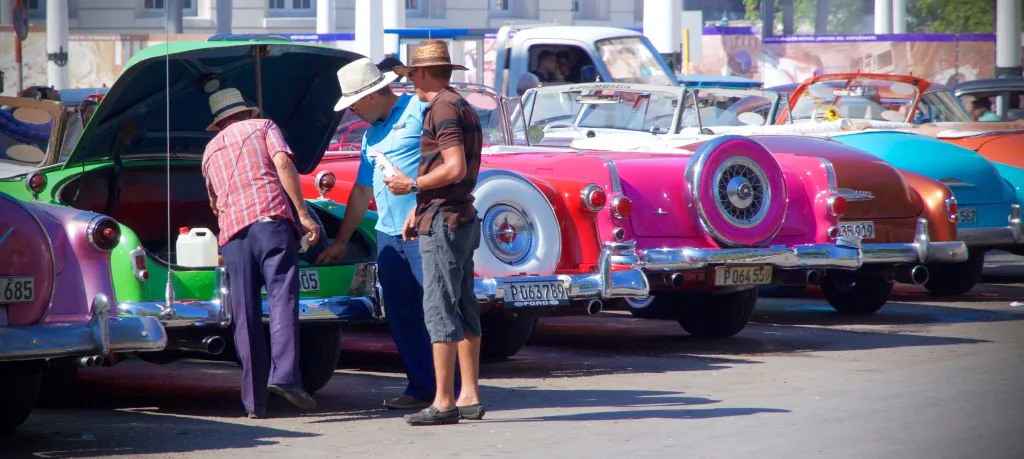
Those cars you’ve seen in downtown Havana
I bought a ticket from New York City to Cancun International in June 2015, for a trip in October. I also bought from Cancun to Havana. The latter was on a Cuban airline, but unfortunately, their website did not accept my American card. In solution, I purchased through a reputed Dutch company, at ~100% markup (trivial, really, and well-worth the price).
When purchasing the latter ticket, I had to indicate my official purpose for travel to Cuba. I checked “journalism.” From that point forward – leaving New York City, arriving in Cancun, arriving in Havana, and doing the whole thing in reverse two weeks later, not a single person asked me a single question about my travel to Cuba or purpose thereof. Arriving in Miami on the way home, the officer asked: “Where are you coming from?”
“Mexico,” I replied.
“Purpose of travel?”
“Holiday.”
“Welcome back to the United States.”
That was really it.
On October 6th, 2015, I exited José Martí International Airport with a gaping crescent smile on my face.
I hadn’t left New York City in a while. I had forgotten what the world was like. I had forgotten that chickens walk muddy sidewalks. That not all airports are surrounded by freeways, and that freeways themselves sometimes move at a tenable, un-anonymous pace. I was drop-jaw, cheeks-pinned-thrilled to be, not necessarily away from New York City, but simply somewhere else. I arrived in a hostel in downtown Havana half-hour later.
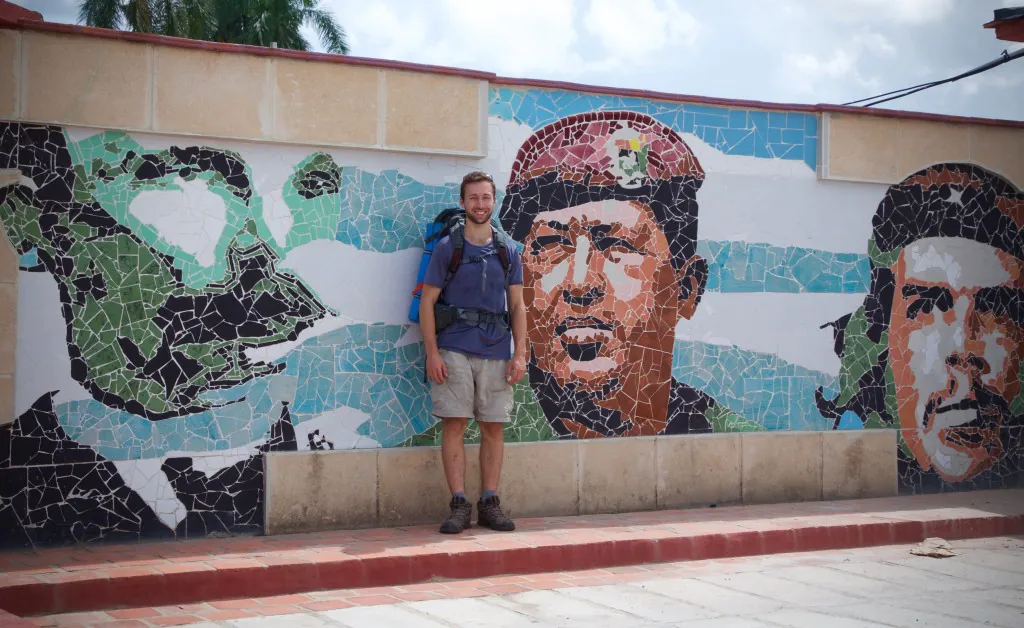
José Marti, Hugo Chávez, Che Guevarra, and myself
Havana
Havana is different. Look. A half-hour century ago, Havana would have been this colossally decadent palace of color, refinement, and indulgence. Of “let’s make this beautiful and enjoy every inch.” And since then, it looks like nothing has changed. Nothing. Not a dollar of up-keep. Not a building that’s been scrubbed, not a window replaced, not a paint bristle moved. 2015 Havana is a delightfully curious apératif of grime and color – a poetic, unassailable snare drum to the human senses.
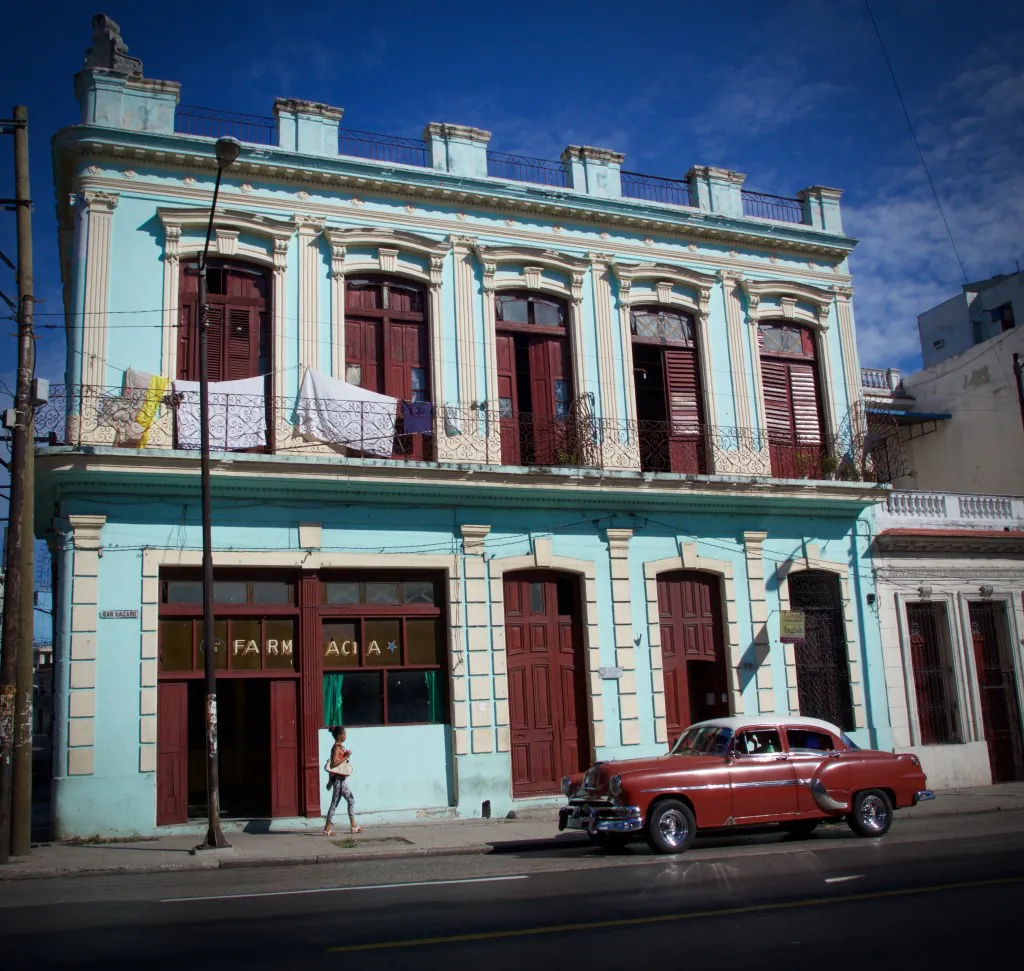
A building. A car
I really enjoyed the University. The first afternoon I visited, I happened upon a circle of students singing songs a capella, passing a guitar to whoever wanted to lead. The University is free, for all intents and purposes. The architecture is regal: think marble, thick presidential columns, everywhere to sit, and a plethora of palm trees. Visiting schools always splashes my heart and mind with something fresh and uplifting, a fresh-squeezed cranberry juice that makes your mouth curl, because I find academia a morally pure pursuit, and doubly so in a country with limited prospects for economic gain.
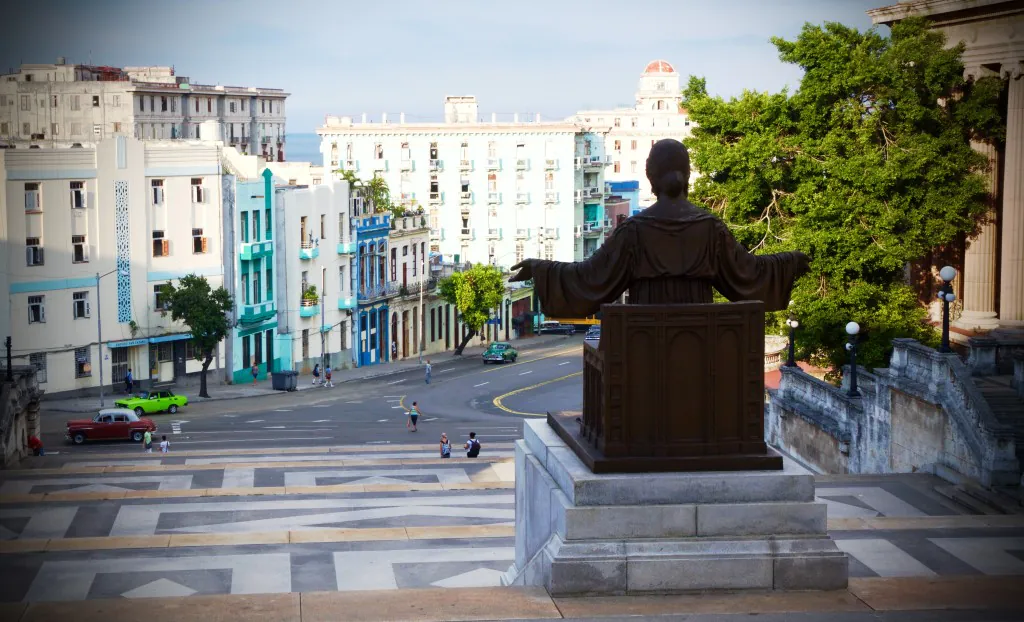
The view from the top of the steps of The University of Havana, looking back into the city
I made friends as well. In the first few hours, I stumbled upon this house – a self-made, self-run live-in art museum, with pasquinade, papier-mâché rats hanging from the walls, dedicated to the pursuit of art from recycled goods. Mejorarte (“best art,” and “better yourself”, in a word(s)). We chatted, and I got on my way. Two weeks later, I found myself back in their living room, this time with a troupe of backpackers, and this time dancing raucously to cheap rum, Rihanna, and general promiscuity. We took off in bus to La Fabrica de Arte – a club/art gallery/indie movie theatre hybrid, the idea of which I found thoroughly unoriginal before arriving, but upon arrival, realized I was in a decidedly special place in a decidedly special country. To all who like music and caipirinhas, regardless of your cynicism: check out La Fabrica de Arte in Havana. It rocks. And do stop by the above house, if you’re able to find it. There live a great group of guys.
Running has become a new favorite travel activity. Adrenaline, exploration, and the curious grin of Cuban women. I ran several times along the storied Malécon, which are some of my best memories from the city.
There’s something intense about Havana. Something of a thunderous peace – of strained, humble revelry – of music. Appreciate your first night there. Appreciate your feeling of unease as you walk an ill-lit, creeping street, with bright music leaking from wide-open doors, as locals approach to tell you how safe their city is, and you wonder what is really going on. I’m not sure there are many places left in the world that are like Havana. Nothing is fabricated.
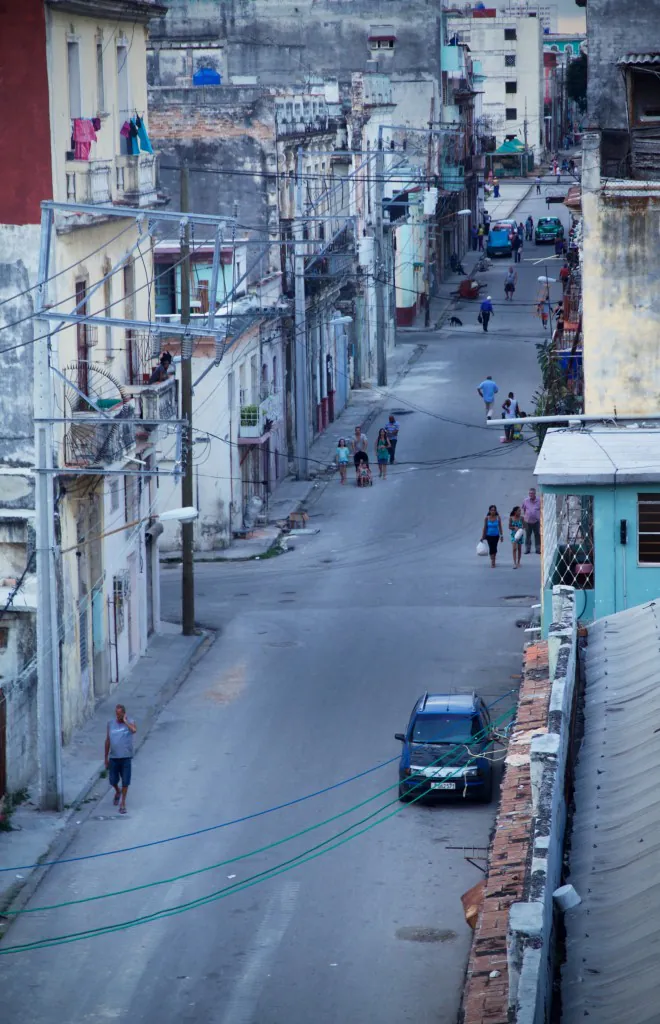
The view from Hostel Magnolia in La Habana
Viñales
I like nature, and Viñales is beautiful. While a bit of a tourist lollipop, I found some cool things to do.
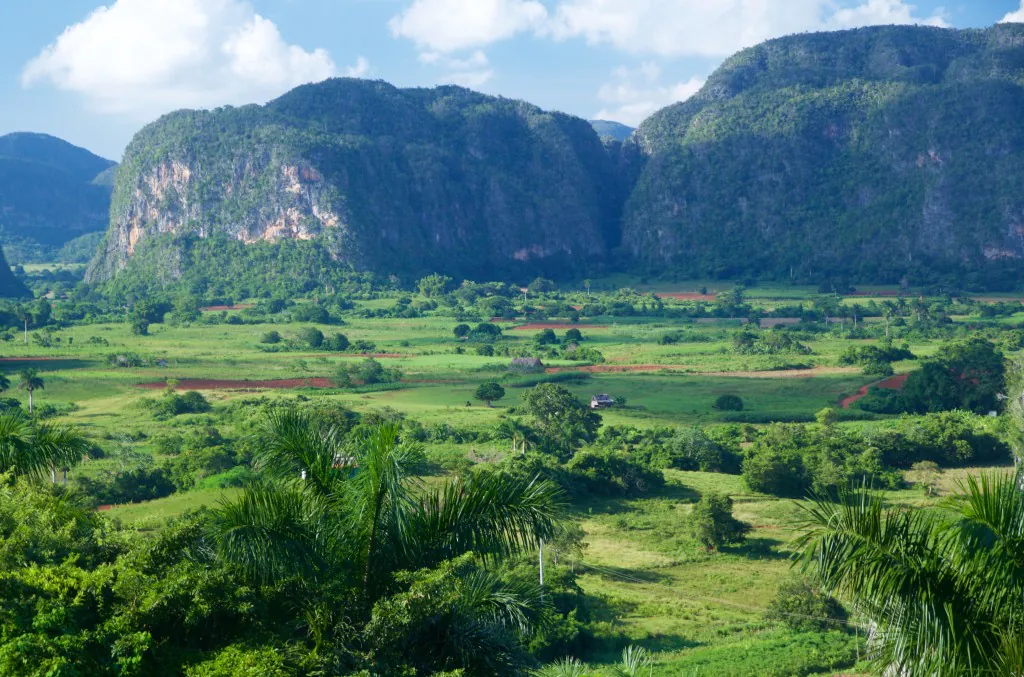
The classic view of Viñales
One afternoon, I rented a bicycle. I pedaled out of town, and tried to generally get lost. I hadn’t been out of New York City in a while, remember! I turned into a small village – a cropping of ~15 white-cement houses – and starting talking to an older man.
Minutes later, a woman appeared and shouted to the man: “it’s my son’s 15th birthday party: come join!” The man invited me along. We walked up a short path, and entered the backyard.
My Latin readers probably already know the name of the game. Chicharrón, rum, and reggaetón. I was received as warmly as to be expected. Most everyone took a fascination in myself and my Spanish (though try as I might, I cannot speak Spanish, nor English, as fast as Cubans speak Spanish). I stayed for an hour and a half, chatting with the kids (typically adolescent, sleeveless, and horny) about, at their impassioned request, women in the United States.
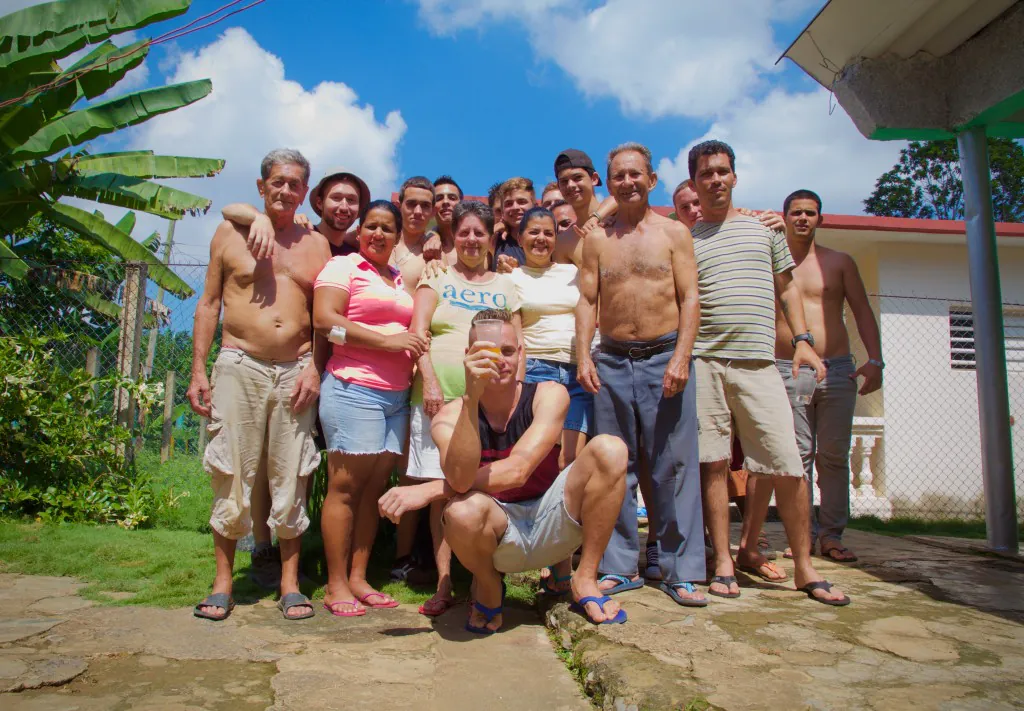
The party. I forget which one’s the birthday boy
Matanzas
Ray Santiago is an incredible, Afro-Cuban musician. He lives in my neighborhood in New York City. Upon crossing paths one day, and telling him about my upcoming travels to Cuba, he commented: “You have to go to Matanzas. Matanzas is the ‘real’ Cuba.”
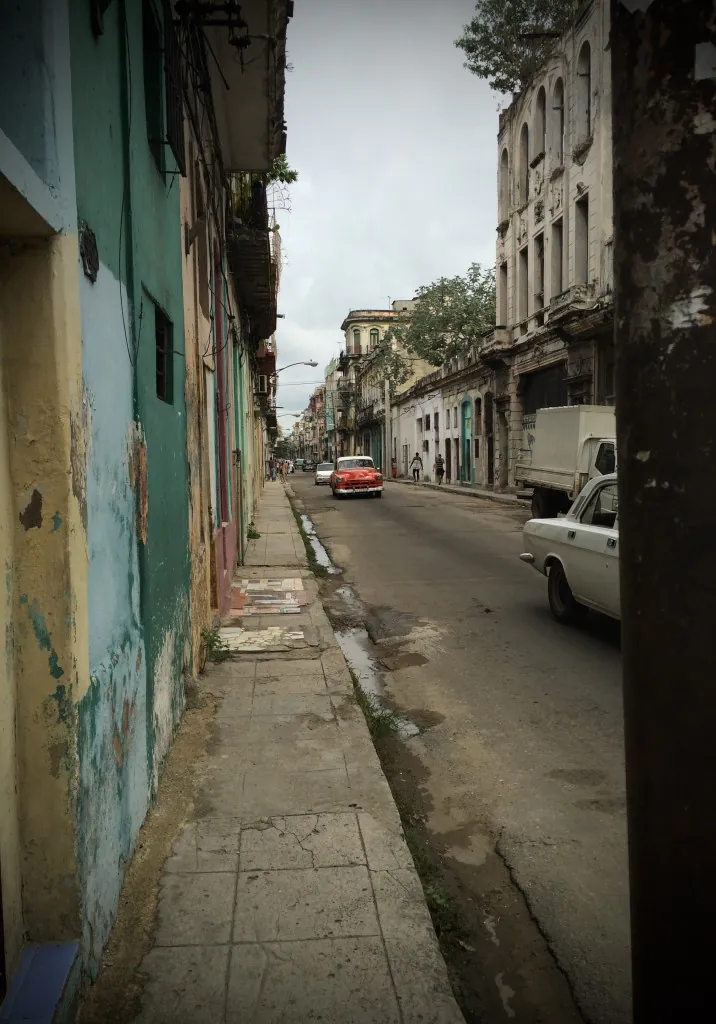
A red car in Matanzas
I didn’t find many white people in Matanzas. I found a city with a similar appeal as that of Havana, with painfully beautiful streets, with leaky, haphazard and unaware luxury, and without a dollar of upkeep nor the bristle of a paintbrush in decades. The Pharmacy Museum is incredible. I went to a baseball game as well!
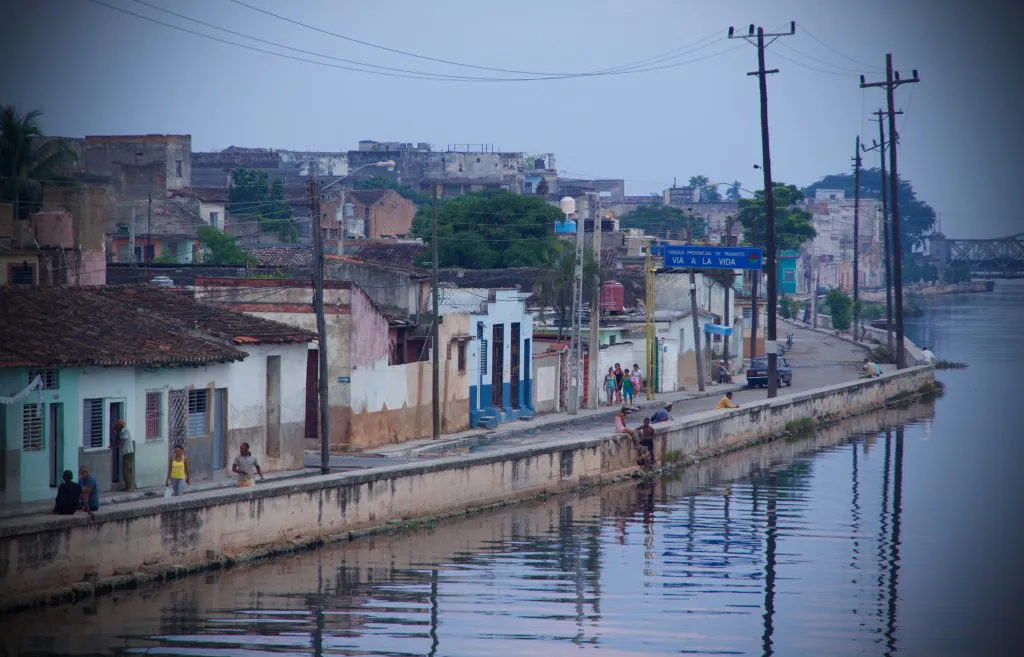
Matanzas waterfront
In Summary
In most countries I’ve visited – the United States firmly included – wealth is distributed very unevenly, but ultimately, some people have it. In Cuba, it really seemed like nobody had it at all. To a staggering extent, Cuba does still maintain a communist society, which manifests itself in ways impossible to ignore.
First: the propaganda! The propaganda is everywhere. “These changes are for more socialism.” “For the community, by the community!” “If you are a teenager, and you’re not a revolutionary, then something is very, very wrong with you.” Holy shit, as you walk by. What other countries have propaganda like this? If you’ve traveled extensively in Russia, China, or North Korea, I want to hear from you.
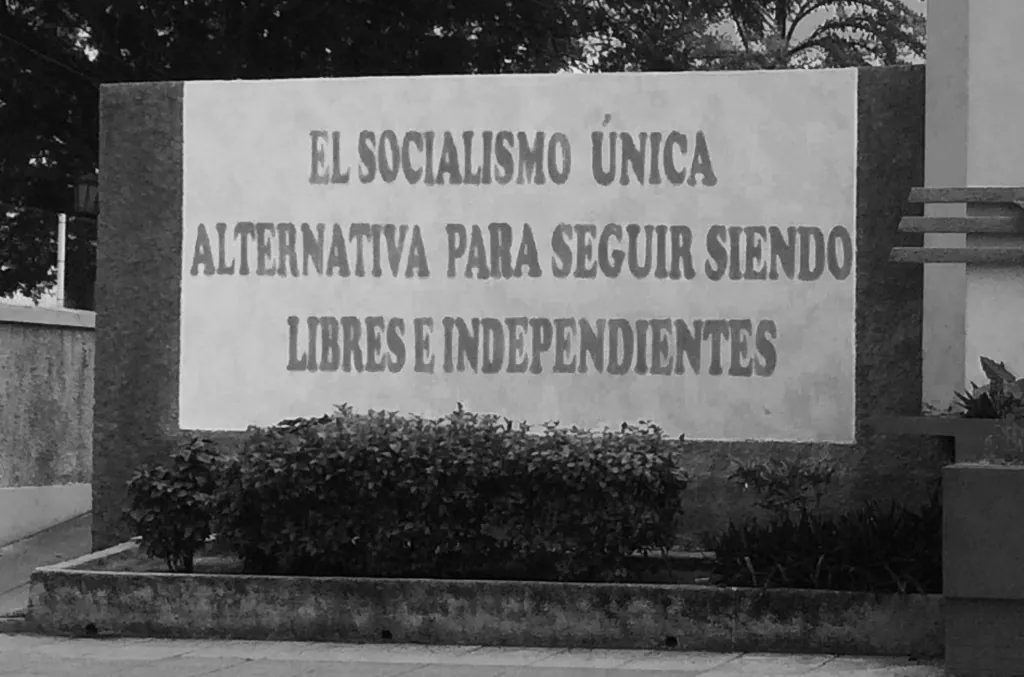
“Socialism is the only way to continue being free and independent”
Next: equality. Cuba has the least semblance of racism and classism I’ve ever witnessed. Sure, it’s there; if you really know Cuba, you might take issue with this statement. But it’s minimal, and shocking to be around.
Third: community, and safety. Cubans will tell you that they live in an exceedingly safe society, gracias a the socialist revolution. They’re right. They’ll also tell you that if a person does not have food for the night, someone in their community will feed them. Always.
Finally: money. The majority of salaries are paid by the government. A doctor in Cuba makes $40/month. It was not until ~4 years ago that Cubans could profit on their own terms: could they own a bakery, could they be a taxi driver, could they guide tourists around the village trails of Viñales. Socialism still reigns. But capitalism is wanted, and seems right around the proverbial corner.
Overall, Cuba was a blast. It was a refreshing change of pace from New York City. It didn’t quite fit into my previous view of the world. It’s the West, but not quite. There’s something that’s been guarded, fostered, preserved with and without intention. It’s changing quickly, though. You should visit before it is reborn.
Bernie Sanders should go to Cuba and run for the successor to the Castro leadership.
I’ll allow it.
“Music and caiprinhas”, caiprinha being a traditional Brazilian drink made from cachaca. Perhaps “music and mojitos”.
Both mojitos and caiprinhas were served 🙂
Beautiful photos of a place I love! Que viva Cuba!! Paint would be aplenty if the embargo were lifted!
Going back ASAP. Maybe in December. Everyone (including 2 year olds) is vaxxed with the Cuban vaccine. A miracle as usual.